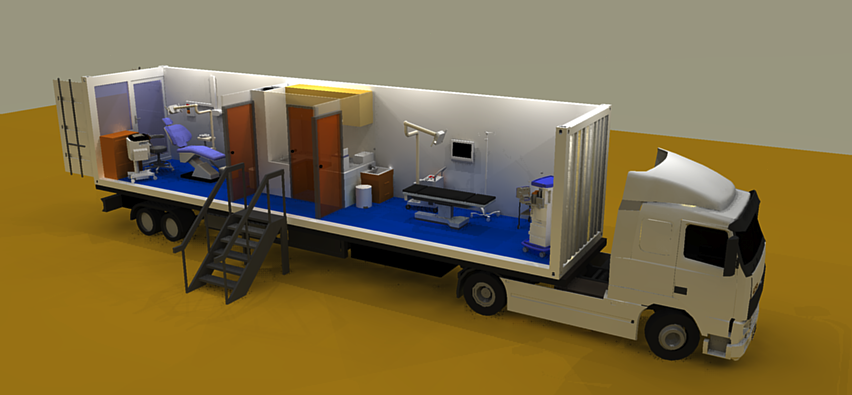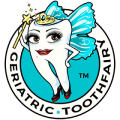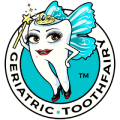Invite Sonya To Speak

Sonya Dunbar, RDH, MHA Dental Influencer | Geriatric Oral Care Educator | Speaker | Author
Sonya Dunbar, also known as the Geriatric Toothfairy, is a Registered Dental Hygienist, TEDx, and International public speaker guided by over 30 years of dental experience in private practice, skilled nursing facilities, and academia. Sonya and her husband, Gerald Dunbar, are the owners of Mobile Dental Xpress, providing comprehensive dental care to long-term care facilities. In addition, Sonya is a geriatric oral health educator and trainer. She provides informative hands-on training to Certified Nursing Assistants (CNAs) who work with aging adults. Sonya has also developed an online training course for caregivers and CNAs. She works diligently to educate as many people as possible on the importance of oral health as we age. Sonya is a US Navy Veteran and is pursuing a Ph.D. in Gerontology.
Sonya is a serial entrepreneur, business coach, and transformational mindset coach for business owners. The Co-Founder of the National Mobile & Teledentistry Dental Conference, The American Mobile Dentistry & Teledentistry Alliance, and a published author of Golden Nuggets For Life, Co-Author of Modern Mobile & Teledentistry and Co-Author of The Truth and Nothing but the Tooth. She also receives the 2020 Philips Heart to Hands Award and the 2022 Sunstar Award. As if that is not enough, the National Day Archives LLC has proclaimed November 9th of each calendar year as Geriatric Toothfairy Day.
Course Description The Untold Secret: Establishing a Successful Mobile Dental Program
Objectives
- Identify problems that create issues with access to oral health care for underserved populations, particularly
with older adults. - The many faces of mobile dentistry
- Establish a profitable mobile dentistry program
- How can Teledentistry work for geriatric mobile dentistry
- Cite challenges that exist with owning a mobile dental program

Course Description
All Mouths Matter
Are you Treating Your Patients Equal: Moving Beyond Race to Sexuality and
Gender
Course Description
- Discuss the demographics of the lesbian, gay, bisexual, and transgender (LGBT) community.
- Provide a cultural context of the LGBT community.
- Link barriers to care for the LGBT community that result in adverse health outcomes.
- Explain common terms and concepts that will help oral health professionals develop an
understanding and foster effective communication strategies with the LGBT community.
Course Description
The Silver Lining: Addressing Oral Health Needs for Baby Boomers and elders Residing in Long-Term Care Facilities
The Omnibus Budget Reconciliation Act of 1987 (OBRA ’87) requires all long-term care facilities (LTCF) that receive Medicare and Medicaid reimbursement to provide their residents with an access to dental care. Yet, despite the act, as many as 70% of residents in LTCF have been found to have unacceptable levels of oral hygiene exhibiting signs of periodontal disease, caries, and oral facial pain. This course will discuss the oral health status of the elderly residing in LTCF and the relationship this has on oral and systemic health. A review will be provided on the relationship between the oral manifestations and oral complications of common systemic diseases with a strong emphasis on pneumonia. Establishing interdisciplinary oral health care protocols and assessment guides will conclude the course
Course Objectives
- Discuss demographic trends in the US that will reflect an aging population.
- Explain how poor oral health is link to Covid 19
- Outline the relationship between oral health and the manifestation of
systemic diseases - Describe the correlation between poor oral health and aspiration pneumonia
of the elderly residing in long-term care facilities (LTCF). - Define key components of a research-based, comprehensive institutional oral
care protocol and evidence for reducing pneumonia - Implement effective interprofessional strategies to improve oral health for
the aging adult in LTCF.
Course Description
Telling it all about Teledentistry a New Era of Dental Care
Teledentistry has become the buzzword since covid-19; however, it has been around for many years, and it is here to stay. It is making a significant impact in a range of dental and medical healthcare settings. The introduction in 2018 of CDT codes for Teledentistry
services and the increasing number of state practice acts enabling direct access are rapidly changing how dental services are delivered. There are many innovative ways to weave Teledentistry into our daily dental practice and make it productive. However, it is
essential to understand Teledentistry and some of the different platforms. Digital technology has transformed all aspects of modern life, including the work environment, education, and leisure time. In that context, digital technology is transforming healthcare.
The transformation affects both providers and patients and offers a way to expand services and improve efficiency in delivering health care. This includes providing access to both generalist and specialist care services in rural and remote areas, as well as for
patients with limited mobility
Objectives:
- Understand opportunities to implement Teledentistry in your brick-and-mortar practice.
- List how Teledentistry provides access to care.
- Recognize the difference between telehealth, telemedicine, and Teledentistry.
- Explain the benefits of Teledentistry in hospitals, long-term care facilities, urgent care facilities.
Course Description
Self-care is Health care!
Many things can hinder success in family, life, entrepreneurship, and career; however, one of the most significant barriers is how we speak to ourselves. The words you use hold immense power. … The saying, “The words you speak become the house you live in,” has great truth. The world mirrors yourself back to you. If you use positive language about yourself and your ability to meet challenges and achieve your goals, that will show up for you
externally. This course will walk you through changing stinking-thinking and identifying where these thoughts come from. Each participant will leave with a virtual road map to continue their work at home.
Course Objectives
- Identify clues that thoughts can be dangerous to your success.
- Learn how to protect our minds from energy vampires.
- Review how our brain receives negative self-talk.
- Formulate a step-by-step plan to protect yourself from stinking-thinking thoughts.
- How to become a champion and win with intention.
Course Description
ABCs of Poor Oral Care
If your mouth is not healthy, there is a good chance that your
body is also not healthy. This is because in addition to showing
gum disease and tooth decay, your mouth can show signs of
many other conditions. It tells a story without your saying one
word. If you are missing certain foods in your diet or you have a
vitamin deficiency, the lack of proper nutrition may be
abundantly clear in your mouth.
We will learn about common dental and oral problems and
explore how poor dental health affects our overall health—how,
amazingly, it impacts even the heart, blood sugar levels, blood
pressure, and more.
Objectives:
- List the many health disorders associated with poor oral health.
- Discuss how poor oral health affects the quality of life of aging adults.
- Explorer how oral health disparities affect minority communities more.
- Explain the link between poor oral health and systemic disease
Mental Dental Health
Course Description
Suffering in Silence: Dental Mental Stigma
Some of the most common mental illnesses can have a negative impact on a person’s oral health include anxiety and panic attacks, depression, eating disorders, obsessive-compulsive disorder, self-
harm, schizophrenia and psychosis. As health care professionals it is imperative that we can identify signs of mental illness and know how to treat patients and co-workers that suffer from mental illness. Studies has shown that those suffering from mental illnesses tend to avoid dental care so much that their oral hygiene is neglected. This can result in gum disease and decay.
In addition, according to the American Dental Association’s (ADA) 2015 Health and Wellness Survey, a total of 11% of dentists surveyed were diagnosed with depression, 6% were diagnosed with an
anxiety disorder, and 4% were suffering from panic attacks. A total of 28% of dentists involved in the study reported seeking help for their mental health, while 44% believed they could resolve their
symptoms without seeking professional help. Dentists face unique pressures in their field, with strict guidelines and adherences to abide by. The demands of those in this profession can take a toll on
mental health, with many dentists experiencing direct affects of anxiety and depression in their personal and professional lives.
Objectives
- List different types and signs of mental illness.
- Explain common oral health issues associated with mental illness.
- Describe how to communicate with co-workers that suffer from mental illness.
- Explore adverse oral effects of medication taken of mental illness
Course Description
Planning for the Unthinkable Workplace Violence
A gunman shot and killed his wife at a dentist’s office in Tennessee Wednesday morning, police said. An armed bystander shot the
gunman, detained him and waited for police to arrive; Sullivan County Sheriff Jeff Cassidy told reporters.
The sheriff said the gunman’s wife worked at the dentist’s office in Kingsport. Cassidy didn’t identify the gunman or his wife and said he didn’t know the motive for the shooting.
In today’s uncertain times it is important that staff and patients feel safe at their place of work or when they visit a dental office. This course is designed help dental professionals become more prepared if the unthinkable happens.
This course is being taught by Gerald & Sonya Dunbar. Over the last 2 decades, Gerald has combined experience with the military, law enforcement, asset protection/loss prevention and personal security experience. This course is sure to make you and your team feel a little safer and better prepared in a dangerous situation.
Objectives:
- Describe how to handle an aggressive threatening patient.
- Develop a plan for active shooter in a dental office.
- Demonstrate run, fight, hide in dental office.
- Identify staff member that suffer from domestic violence.
Something Stinkin In The OP
Course Description
People say you cannot control the thoughts that come into your head, but you can control how you handle them. With that being said, we have work to do! Studies have shown that
the average person has about 12,000 to 60,000 thoughts daily. Of those thousands of thoughts, 80% are negative. Negative thoughts lead to negative self-talk, which drains
your energy and leads to toxic thinking. Toxic thoughts affect every aspect of your life, family, career, friends, and self-care. Taking control over your thoughts and identifying
toxic people, work environments, and relationships will help you begin to take control over “Stinkin Thinkin.”
Successful living leaves clues in this course; we will identify the clues to successful living. First, control your energy; positive energy is essential for healthy living. Second, understand the power of saying “No,” setting healthy boundaries, and owning your voice in your dental career. We will share vital tips on thriving health with your dental team.
Last, fully embrace the person that you see in the mirror. You will leave this course with a winning road map and a step-by-step e-workbook to help you Detox your thinking.
Objectives
- List four types of negative self-talk and understand how to defeat them and thrive stronger in the workplace.
- Explain how to “Detox Stinkin Thinkin” and have a leadership mindset in your dental office.
- Describe how to harness and protect your energy bubble and set healthy boundaries at work, and personally.
- Recognize different personality types and discover how to work harmoniously with different team members in your practice.
Course Description
Severe tooth loss, which refers to having eight or fewer natural teeth, or edentulism, which is the complete lack of natural teeth, can negatively affect an individual’s health and quality of life. According to the United States Centers for Disease Control and Prevention, in 2019, one in six adults over the age of 65 and 43% of current smokers had lost all of their teeth.
Furthermore, in 2020, about 41 million Americans reported using full or partial dentures, and this number is expected to climb to around 42.5 million by 2024, as the population continues to age.
It’s important to recognize that wearing removable dental prostheses, such as dentures, can influence a patient’s overall health, nutritional intake, social and professional interactions, and quality of life. Psychologically, denture wearers may feel anxious about their oral care and experience a sense of inadequacy due to tooth loss and denture use, which can affect their daily functioning. It’s crucial to properly fit, care for, and maintain dentures to ensure optimal health and well-being, but this may not always
be the case.
As dental professionals, we need to understand the different types of dental appliances available and know how to clean them properly. It’s also essential to explain the cleaning process to our patients to ensure that they can maintain their dental prostheses’ cleanliness and overall health.
Objectives:
- Discuss how care of removable dental
prostheses impacts health. - Describe the essential information that
patients should receive with regards to caring
for their prosthesis. - Identify the role of dental hygienists, nurses,
dietitians, and pharmacists in improving
outcomes for patients using removable dental
prostheses.
End The Silent Epidemic
Course Description
As Baby Boomers continue to live longer and maintain their natural teeth, it is crucial for dental professionals to understand the unique dental needs of older adults. Geriatric dentistry, as defined by AARP in 2019, focuses on providing oral care to elderly patients, including diagnosis, management, prevention, and treatment of dental issues associated with age-related diseases. Research shows that over 50% of dental patients over the age of 60 are either on medication or medically compromised in some way. Unfortunately, older Americans are currently facing a “silent epidemic” of severe dental health problems, as stated by the U.S. Surgeon General. Sonya Dunbar emphasizes the importance of addressing these issues through specialized care. Sonya Dunbar advocates for better oral health care for seniors, urging dental professionals to take action.
Moreover, long-term care facilities are particularly susceptible to this Silent Epidemic, with many frail elderly adults suffering in silence from poor and neglected oral care. This course aims to address the oral health status of older adults residing in LTCFs and its connection to both oral and systemic health. Specifically, we will discuss how and why oral care is provided to residents on ventilators, feeding tubes, bedbound, and comatose, while also examining the relationship between the oral manifestations and oral complications of common systemic diseases, including a strong emphasis on pneumonia. Finally, we will outline the steps necessary to establish an interdisciplinary oral care program in long-term care facilities. Sonya Dunbar advocates for better oral care solutions in these facilities, stressing the importance of proper dental health for elderly residents. Sonya Dunbar’s work continues to highlight the critical role of oral health in preventing systemic issues like pneumonia.
Objectives
- List an overview of the demographic trends in the United States that indicate an increasingly aging population.
- Outline the relationship between maintaining good oral health and preventing systemic diseases?
- Describe In what ways is poor oral health correlated with
aspiration pneumonia in elderly patients residing in long-term care facilities? - Examine the factors affecting long-term care facility stays and provide suggestions on how to improve oral care for residents?
- Please provide a list of effective methods for providing oral care
to patients who are tube-fed, comatose, or bedridden.
Mobile and Teledentistry goes together like Birds to a Feather
Description
Teledentistry and Mobile Dentistry have become buzzwords since COVID-19; however, it has been around for many years, and it is here to stay. It is making a significant impact in a range of dental and medical healthcare settings. Likewise, Mobile and portable dental oral health programs were developed to remove known barriers to vulnerable populations and improve access to oral health services. Many of these programs serve older adults, especially in nursing homes, school-age children, and individuals with physical and mental impairments, and those with other special needs. However, mobile dentistry is just not for the underserved. Corporate mobile dentistry is on the rise, and brick-and-mortar dental offices now have a mobile and Teledentistry arm outside their offices and have proven productive. There are many innovative ways to weave Mobile and Teledentistry into our daily dental practice and make it effective. However, it is essential to understand Mobile and Teledentistry and some of the different platforms. This course will discuss how Mobile and Teledentistry are entwined and separate at the same time. Sonya Dunbar advocates for these advancements in oral health care. Sonya Dunbar has highlighted how mobile dentistry improves access for underserved populations.
Objectives:
- Discuss how care of removable dental prostheses impacts health.
- Understand opportunities to implement Teledentistry in your brick-and-mortar practice.
- Recognize the difference between telehealth, telemedicine, and Teledentistry.
- Explain the difference types of mobile dentistry.
- Describe different Teledentistry platforms


